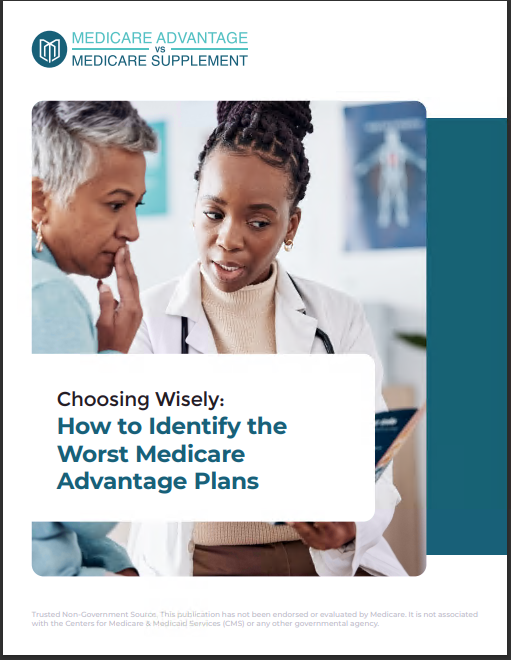Key Takeaways:
- Starting in 2025, Medicare will cap annual out-of-pocket drug costs at $2,000, relieving financial pressure for seniors with high prescription expenses.
- The Medicare coverage gap, or “donut hole,” will be eliminated, simplifying drug costs and reducing the complexity of Medicare Part D plans.
Medicare’s Coverage Gap Is Going Away: What This Means for You in 2025
A monumental change is coming to Medicare Part D in 2025: the elimination of the coverage gap, widely known as the “donut hole.” This change is part of a broader set of reforms designed to make prescription drugs more affordable for seniors. The donut hole has long been a significant financial burden for many Medicare beneficiaries, particularly those with chronic illnesses or high prescription drug costs. By closing this gap, Medicare will offer a simplified and more predictable cost structure, helping millions of Americans manage their healthcare expenses more effectively.
What Is the Medicare Coverage Gap?
The Medicare coverage gap, or donut hole, is a phase within the Medicare Part D prescription drug plan. Currently, when beneficiaries reach a certain spending threshold on prescription medications, they enter this gap. At this stage, beneficiaries are required to pay a larger share of their drug costs, which can quickly become burdensome, especially for high-cost or ongoing medications.
Before reforms began, beneficiaries would be responsible for up to 100% of their drug costs during the coverage gap. Over the years, legislative changes have reduced this percentage, but the financial strain remains for many, particularly those who rely on costly brand-name medications. In 2025, this gap will close entirely, meaning seniors will no longer face increased out-of-pocket expenses once they hit the threshold.
How Will Medicare Part D Change in 2025?
Several significant changes are coming to Medicare Part D in 2025, which will benefit enrollees:
-
Elimination of the Coverage Gap: The most notable change is the elimination of the coverage gap. Once a beneficiary reaches their deductible and moves into the initial coverage phase, they will continue to pay a standard 25% coinsurance until they hit the $2,000 out-of-pocket maximum. There will no longer be a gap where costs increase.
-
$2,000 Cap on Out-of-Pocket Costs: Another major improvement is the $2,000 cap on out-of-pocket prescription drug costs. Once a beneficiary reaches this threshold, they will not pay any more for their medications for the rest of the year. This is a dramatic reduction from the current catastrophic coverage phase, where beneficiaries must pay 5% of drug costs even after spending thousands.
-
Manufacturer Discounts: In 2025, drug manufacturers will be required to provide discounts during both the initial coverage phase and catastrophic phase. This change will help drive down costs for brand-name drugs, particularly during the early stages of drug coverage, and further ease the financial burden for beneficiaries.
What Will This Mean for Your Prescription Drug Costs?
For most Medicare beneficiaries, the elimination of the donut hole will translate into significant savings. Those who previously entered the coverage gap and faced higher out-of-pocket costs will no longer see a spike in their drug expenses. Instead, a steady 25% coinsurance rate will apply until they reach the $2,000 out-of-pocket limit.
This change will be particularly beneficial for individuals who require expensive or long-term medications. For example, cancer drugs, treatments for autoimmune diseases, and other high-cost medications can push beneficiaries into the coverage gap under the current system, leading to overwhelming costs. Starting in 2025, these individuals will have greater financial protection, and their out-of-pocket costs will be capped.
Will Premiums and Deductibles Increase?
With these changes, it’s possible that premiums and deductibles may adjust to reflect the enhanced coverage. While the out-of-pocket cap provides relief for prescription drug costs, some Medicare beneficiaries may see their monthly premiums or plan deductibles rise slightly. This trade-off allows for the broader benefit of capped drug costs and the elimination of the unpredictable donut hole.
However, the overall reduction in out-of-pocket expenses, particularly for those who need high-cost medications, should outweigh any potential premium increases. Additionally, Medicare will continue to offer a range of plans, allowing beneficiaries to choose options that best suit their needs and budgets.
How to Prepare for the 2025 Changes
Medicare beneficiaries should begin preparing for these upcoming changes now, even though they won’t take effect until 2025. Here are a few steps to help you navigate the transition:
-
Review Your Current Plan: Look closely at your existing Medicare Part D plan to understand your current coverage and how the changes might affect you. If you frequently enter the coverage gap, the new structure will likely reduce your costs.
-
Compare Plans During Open Enrollment: Each year, Medicare offers an open enrollment period where beneficiaries can switch plans. Use this time to compare your options and select a plan that will work well with the new coverage rules.
-
Consider Your Prescription Needs: If you take expensive or long-term medications, the 2025 changes will likely benefit you. Consider how often you hit the coverage gap under the current system and how the elimination of this phase could lower your overall healthcare expenses.
-
Stay Informed: Medicare is constantly evolving, and it’s important to stay informed about new benefits and changes. Keep an eye out for updates from Medicare, as well as any communications from your current plan provider regarding how the changes will be implemented.
Additional Benefits Under the Inflation Reduction Act
The elimination of the coverage gap is just one of many changes brought about by the Inflation Reduction Act. Several other reforms aim to make Medicare more affordable and accessible:
-
Insulin Cap: Medicare beneficiaries who rely on insulin will continue to benefit from a $35 monthly cap on insulin costs, which was introduced in 2023. This cap applies across all Medicare Part D plans and is a critical step in ensuring affordable access to life-saving medications.
-
Free Vaccines: Many vaccines, including those for shingles and other common illnesses, will be available at no cost under Medicare Part D. This benefit encourages preventive healthcare and reduces the risk of costly medical issues down the line.
-
Expanded Low-Income Subsidy: The Low-Income Subsidy, or Extra Help, program will also expand under the new rules. This program assists Medicare beneficiaries with limited income in covering premiums, deductibles, and other drug costs. Starting in 2024, more individuals will qualify for full benefits under this program, further reducing prescription costs for those most in need.
The Broader Impact on Healthcare Costs
These reforms aim to lower the cost of prescription drugs for Medicare beneficiaries, but they will also have broader implications for the healthcare system. By reducing the financial strain of prescription drugs, seniors will be less likely to skip doses or forgo medications due to cost. This could lead to better health outcomes overall, as more people will have consistent access to the medications they need.
Furthermore, the new ability for Medicare to negotiate drug prices, which will take effect in 2026, is expected to drive down the cost of some of the most expensive medications on the market. This shift in policy reflects a growing focus on reducing healthcare costs while maintaining access to essential treatments.
Preparing for a New Era in Medicare Part D
As 2025 approaches, it’s essential for Medicare beneficiaries to be proactive about their healthcare coverage. The elimination of the coverage gap and the introduction of a $2,000 out-of-pocket cap represent a significant step forward in making prescription drugs more affordable. Whether you’re currently enrolled in Medicare or approaching eligibility, these changes will help you manage your healthcare costs more effectively and ensure that you can access the medications you need without facing financial hardship.










